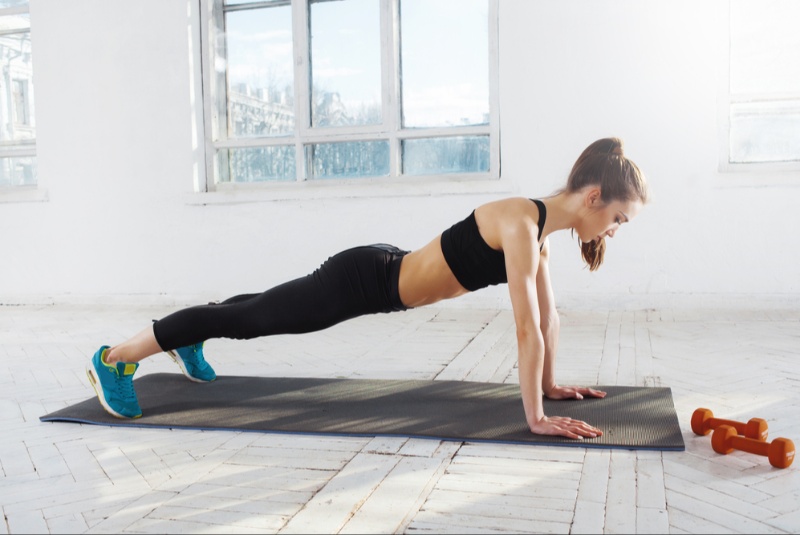Achieving total-body fitness involves a comprehensive approach, targeting various muscle groups to improve strength, endurance, flexibility, and balance. This guide outlines the best exercises for a holistic fitness routine, ensuring you engage every major muscle group for overall health and well-being.
Understanding Total-Body Fitness
Total-body fitness transcends focusing on isolated muscle groups, advocating for a holistic approach to physical well-being. It combines strength training, cardio exercises, flexibility routines, and balance workouts to engage the entire body. This method not only enhances muscular strength and endurance but also improves cardiovascular health, flexibility, and neuromuscular coordination. By incorporating a variety of exercises that target different muscle groups, individuals can achieve a balanced physique, reduce the risk of injuries, and improve overall health. A well-rounded fitness routine should cater to personal goals, whether it’s weight loss, muscle toning, or enhancing athletic performance, ensuring it’s sustainable and enjoyable to encourage consistency and long-term commitment.
Strength Training for Foundation
Strength training is the cornerstone of total-body fitness, essential for building muscle, increasing metabolic rate, and supporting bone health. Exercises like squats, deadlifts, and bench presses are foundational, targeting multiple major muscle groups simultaneously for efficient and effective workouts. Squats engage the core, glutes, quads, hamstrings, and calves, promoting lower body strength and stability. Deadlifts, renowned for their comprehensive muscle engagement, work the back, glutes, legs, and core. Bench presses focus on the chest, shoulders, and triceps, enhancing upper body strength. Incorporating these exercises into your routine two to three times a week, with proper form and gradually increasing weight, can lead to significant improvements in overall strength and muscular endurance.
Cardiovascular Exercises for Heart Health
Cardiovascular exercises are vital for heart health, endurance, and fat burning. High-Intensity Interval Training (HIIT), running, cycling, and swimming are excellent for engaging the entire body and boosting cardiovascular efficiency. HIIT, involving short bursts of intense activity followed by rest, is particularly effective for improving endurance and metabolic rate. Running and cycling, accessible and versatile, strengthen the legs, core, and cardiovascular system. Swimming, a low-impact exercise, engages multiple muscle groups while minimizing joint stress, ideal for overall fitness and recovery. Integrating cardio exercises three to five times a week, with varying intensity and duration, can enhance heart health, endurance, and contribute to fat loss.

Flexibility and Mobility Work
Flexibility and mobility are crucial for a well-rounded fitness regimen, enhancing range of motion, reducing injury risk, and improving performance. Yoga and Pilates are exemplary for promoting flexibility, balance, and core strength. Yoga, with its varied poses and stretches, targets different muscle groups, improving flexibility and mental focus. Pilates, focusing on core strength, also enhances flexibility and body awareness. Stretching routines, incorporating dynamic stretches before workouts and static stretches after, can further improve flexibility and reduce muscle tension. Dedicate time for flexibility and mobility work several times a week to complement strength and cardio routines for a balanced fitness approach.
Balance and Core Stability
Balance and core stability exercises are fundamental for overall fitness, enhancing posture, reducing injury risk, and improving athletic performance. Exercises like plank variations, single-leg stands, and stability ball workouts strengthen the core and improve balance. Planks, targeting the entire core, enhance stability and support proper posture. Single-leg stands and exercises challenge balance, strengthening stabilizer muscles and improving coordination. Incorporating balance and core exercises into your routine not only supports total-body fitness but also enhances functional movements in daily life and sports.
Integrating Total-Body Fitness into Your Routine
Creating a balanced fitness routine involves combining strength, cardio, flexibility, and balance exercises throughout the week. Aim for strength training two to three times a week, focusing on compound movements that engage multiple muscle groups. Incorporate cardio exercises three to five times a week, mixing high-intensity sessions with moderate endurance activities. Dedicate time for flexibility and mobility work, including yoga or stretching routines, to enhance range of motion and reduce muscle stiffness. Balance and core stability exercises can be integrated into your strength or cardio days or performed as standalone workouts. Remember, consistency and progression are key to achieving and maintaining total-body fitness. Listen to your body, gradually increase intensity and complexity, and adjust your routine to keep it challenging and enjoyable.
Nutrition and Recovery: Essential for Total-Body Fitness
Nutrition and recovery are pivotal in achieving total-body fitness, offering the fuel and rest your body needs to perform and improve. A balanced diet, rich in proteins, healthy fats, carbohydrates, vitamins, and minerals, supports muscle repair, energy levels, and overall health. Hydration is equally important, enhancing performance and aiding in recovery. Adequate sleep and rest days are crucial for muscle recovery, injury prevention, and performance improvement. Incorporating active recovery methods, such as light walking or yoga, can also aid in muscle soreness and flexibility. Prioritizing nutrition and recovery alongside your fitness routine maximizes results and sustains long-term health and well-being.
Total-body fitness is an inclusive approach to physical well-being, focusing on strength, endurance, flexibility, and balance. By incorporating a variety of exercises that target different aspects of fitness, you can achieve a well-rounded physique, improve overall health, and enhance quality of life. Whether you’re a fitness enthusiast or just starting your journey, understanding and applying the principles of total-body fitness can lead to significant improvements in your physical and mental well-being. Remember, the journey to fitness is personal and evolving; tailor your routine to your goals, abilities, and preferences, ensuring a sustainable and rewarding experience.




